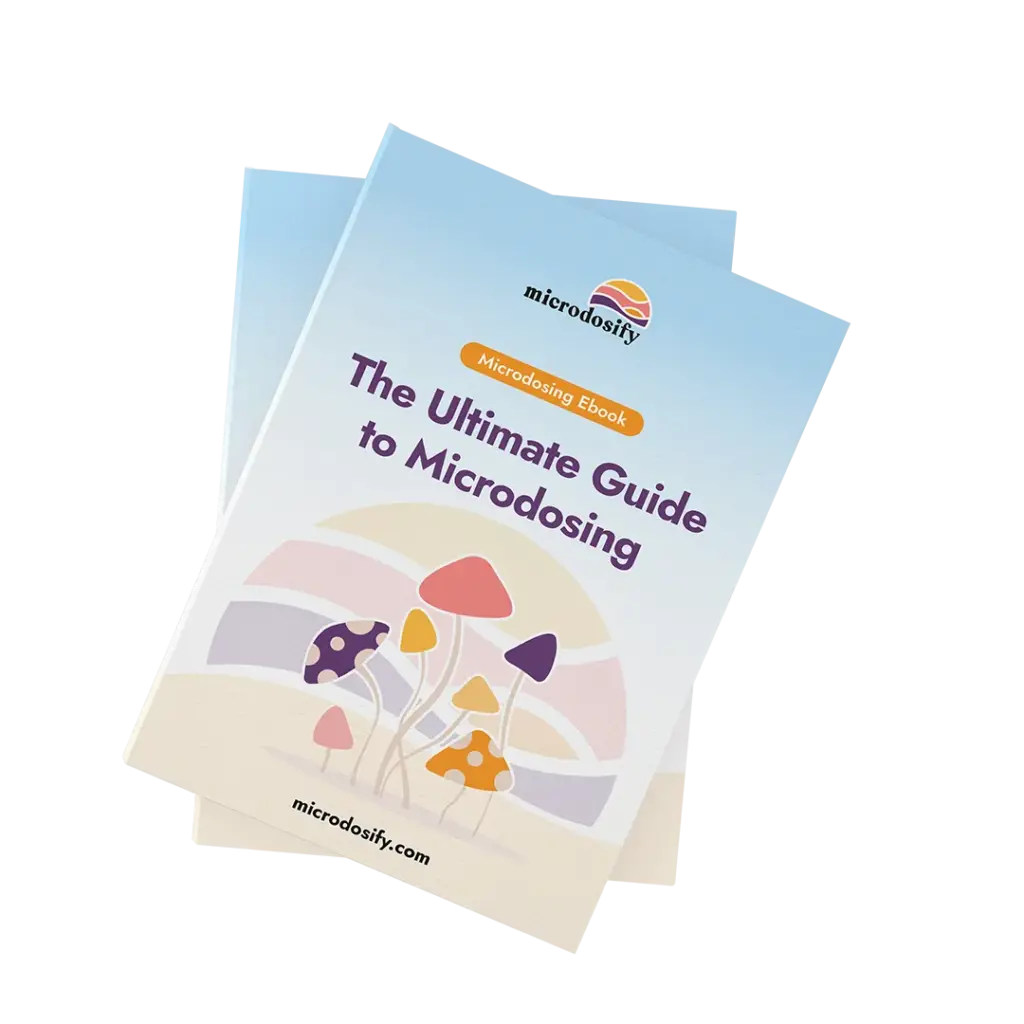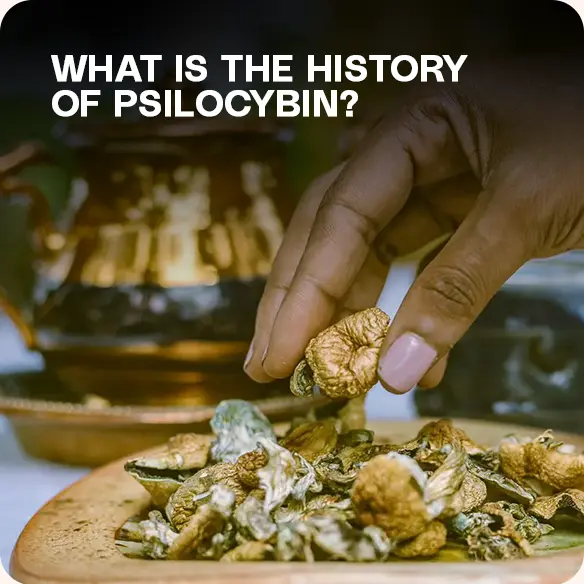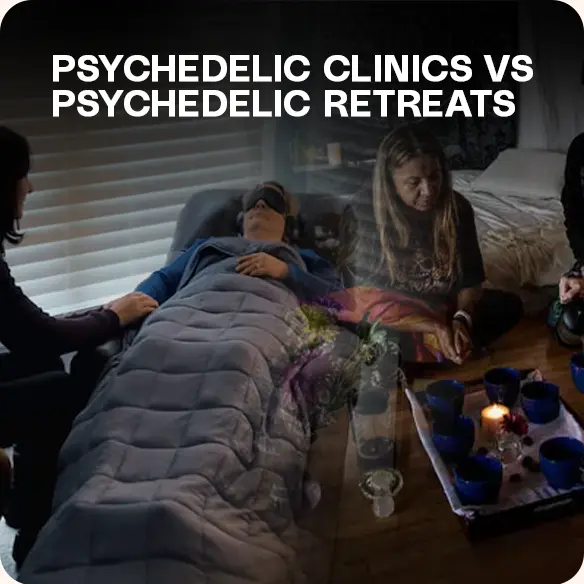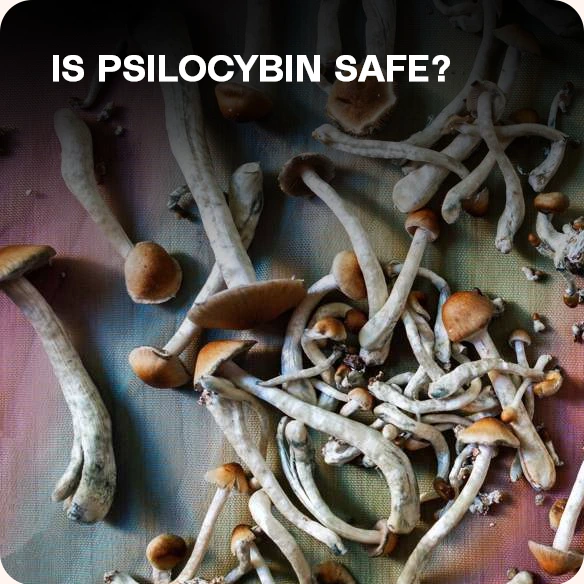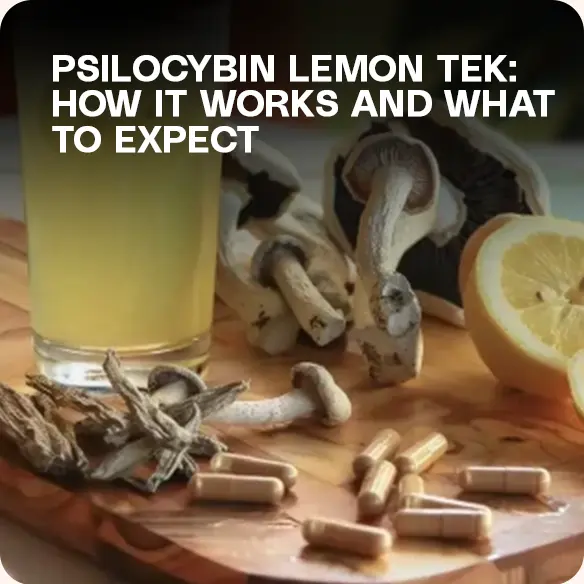Psilocybin history spans over 9,000 years from ancient Mesoamerican rituals to modern clinical trials.
Indigenous cultures in Central and South America used psilocybin mushrooms for spiritual ceremonies and healing practices.
The compound gained attention in 1960s America through Harvard professor Timothy Leary’s research, led to Schedule I classification during Nixon’s War on Drugs in 1970, and returned to clinical research in 2000 when Johns Hopkins received the first FDA approval to study psilocybin in 30 years.
The relationship between psilocybin and human culture reflects changing attitudes toward consciousness, medicine, and mental health treatment.
Archaeological evidence suggests ceremonial mushroom use dates back millennia, while modern research demonstrates therapeutic potential for depression, anxiety, and PTSD in controlled clinical settings.
Key Points
- Ancient Origins: Archaeological evidence shows psilocybin mushroom use in Mesoamerican cultures dating back 9,000+ years
- Scientific Discovery: R. Gordon Wasson documented ceremonial use in 1957 Life magazine article, sparking Western interest
- Harvard Research Era: Timothy Leary and Richard Alpert conducted studies at Harvard from 1960-1963, including the Concord Prison Experiment
- Cultural Impact: 1960s counterculture movement popularized psychedelics, influencing musicians like Bob Dylan and John Lennon
- Legal Prohibition: Nixon classified psilocybin as Schedule I substance in 1970, ending research for 30 years
- Research Renaissance: Roland Griffiths at Johns Hopkins resumed psilocybin studies in 2000 with FDA approval
- Modern Legalization: Oregon (2020) and Colorado (2022) became first US states to legalize therapeutic psilocybin use
How Did Ancient Cultures Use Psilocybin Mushrooms?
Indigenous Mesoamerican cultures used psilocybin mushrooms in religious ceremonies for over 9,000 years.
Archaeological evidence from Mexico shows mushroom stone sculptures and artwork depicting ceremonial use by Aztec, Maya, and other native populations.
These cultures called psilocybin mushrooms “teonanácatl,” meaning “flesh of the gods.”
Traditional use involved careful preparation, ritual context, and community guidance.
Shamans and healers administered mushrooms during specific ceremonies for spiritual insight, healing illnesses, and connecting with divine forces.
The mushrooms grew naturally in highland regions of Mexico and Central America, making them accessible to local populations throughout history.
| Culture | Time Period | Usage Context | Purpose |
|---|---|---|---|
| Aztec | 1300-1521 CE | Religious ceremonies | Divine communication |
| Maya | 2000 BCE – 1500 CE | Healing rituals | Spiritual guidance |
| Mazatec | Present day | Traditional medicine | Community healing |
Spanish colonization suppressed these practices, but some indigenous communities preserved traditional knowledge.
Mazatec healer María Sabina played a crucial role in reintroducing psilocybin to Western researchers in the 1950s, bridging ancient wisdom with modern scientific interest.
How Did Psilocybin Reach Western Science?
R. Gordon Wasson introduced psilocybin to Western science through his 1957 Life magazine article “Seeking the Magic Mushroom,” which described his experience with María Sabina in Oaxaca, Mexico. Wasson, a banker and amateur mycologist, participated in traditional mushroom ceremonies and documented their profound effects on consciousness.
The Life magazine article sparked widespread interest among researchers, including Harvard psychology professors Timothy Leary and Richard Alpert.
Leary read Wasson’s account and traveled to Mexico to experience psilocybin mushrooms himself. This led to Harvard’s Psilocybin Project, which conducted research from 1960-1963 on the compound’s psychological and therapeutic effects.
Swiss chemist Albert Hofmann, who had previously synthesized LSD, isolated psilocybin from mushroom samples provided by Wasson.
This allowed researchers to study pure psilocybin in controlled laboratory settings rather than relying on variable mushroom preparations.
What Happened During Harvard’s Psilocybin Research?
Harvard’s Psilocybin Project conducted groundbreaking studies from 1960-1963 under Timothy Leary and Richard Alpert’s direction.
The research included the famous Concord Prison Experiment, which gave psilocybin to inmates to study whether psychedelic experiences could reduce recidivism rates.
Initial results suggested psilocybin decreased the likelihood of prisoners returning to jail after release.
However, questionable research methods and lack of proper controls discredited the findings. The study lacked placebo groups, proper follow-up protocols, and objective outcome measures required for valid scientific conclusions.
Despite methodological flaws, Harvard research demonstrated psilocybin’s potential to create meaningful psychological experiences.
Studies showed the compound could produce spiritual-type experiences, improve mood, and alter personality measures in controlled settings. This research laid groundwork for understanding psilocybin’s effects on human consciousness.
Harvard terminated Leary and Alpert’s research in 1963 due to concerns about methodology and the professors’ advocacy for recreational psychedelic use.
The controversy marked the end of legitimate academic psilocybin research for decades.
How Did the War on Drugs Affect Psilocybin Research?
President Nixon’s War on Drugs ended psilocybin research by classifying it as Schedule I in 1970.
This designation claimed psilocybin had high abuse potential and no accepted medical use, making research extremely difficult and expensive to conduct.
The classification resulted from cultural and political factors rather than scientific evidence. Nixon viewed the 1960s counterculture movement, partly associated with psychedelic use, as a threat to traditional American values. He declared Timothy Leary “the most dangerous man in America” due to his psychedelic advocacy.
Schedule I status effectively ended all psilocybin research from 1970-2000. Scientists could not obtain research licenses, funding became unavailable, and universities avoided controversial psychedelic studies. This 30-year research gap slowed understanding of psilocybin’s therapeutic mechanisms and safety profile.
The War on Drugs created lasting stigma around psychedelics, spreading myths about addiction potential and brain damage that research has since disproven. These misconceptions continue to influence public opinion and policy decisions despite mounting scientific evidence for therapeutic benefits.
When Did Modern Psilocybin Research Begin?
Modern psilocybin research resumed in 2000 when Roland Griffiths at Johns Hopkins received the first FDA approval to study psychedelics in 30 years. This marked the beginning of the contemporary psychedelic research renaissance, with rigorous clinical trials replacing the less controlled studies of the 1960s.
Johns Hopkins studies used double-blind, placebo-controlled methodology to examine psilocybin’s effects on healthy volunteers. Research showed the compound could reliably produce mystical-type experiences with lasting positive effects on personality, mood, and life satisfaction when administered in supportive clinical settings.
Other institutions followed Johns Hopkins’ lead, conducting studies on psilocybin for treatment-resistant depression, end-of-life anxiety, addiction, and other mental health conditions. The FDA granted psilocybin “breakthrough therapy” designation in 2018 for depression treatment, expediting clinical development.
Current research emphasizes safety protocols, therapeutic settings, and integration support that were lacking in earlier studies. Modern trials screen participants carefully, provide psychological support, and follow strict dosing guidelines to maximize benefits while minimizing risks.
What Is Psilocybin’s Current Legal Status?
Psilocybin remains federally illegal but some US states have legalized therapeutic use. Oregon became the first state to legalize supervised psilocybin therapy in 2020, followed by Colorado in 2022. Several other states and municipalities have decriminalized possession or deprioritized enforcement.
Oregon’s program allows licensed facilitators to administer psilocybin in controlled settings after a preparation period and with integration support. Colorado’s law permits similar therapeutic use while also allowing personal cultivation and sharing among adults 21 and older.
Federal law still classifies psilocybin as Schedule I, creating tension between state and federal regulations. Clinical research continues under special FDA-approved protocols, with multiple Phase 2 and Phase 3 trials studying psilocybin for various mental health conditions.
Those interested in learning about current developments can find educational resources through microdosing fundamentals and information about frequently asked questions regarding legal considerations and safety practices.
How Has Psilocybin Research Evolved?
Modern psilocybin research uses rigorous clinical trial methodology with proper controls, standardized dosing, and long-term follow-up that earlier studies lacked. Current research examines specific mental health conditions rather than general consciousness exploration.
Brain imaging studies using fMRI and PET scans show how psilocybin affects neural networks, particularly the default mode network associated with self-referential thinking. This research helps explain the compound’s therapeutic mechanisms and guides treatment protocol development.
Clinical trials focus on treatment-resistant conditions where conventional therapies have failed. Studies show promising results for depression, with 60-70% of participants experiencing significant symptom reduction lasting months after treatment. Similar benefits appear for anxiety, PTSD, and addiction disorders.
Research now includes diverse populations and examines factors affecting treatment response, such as genetics, personality traits, and prior trauma history. This personalized approach aims to identify which patients benefit most from psilocybin therapy.
People seeking current information about research developments can explore nootropic vs magic mushroom comparisons and learn about different approaches to mushroom-based wellness practices.
What Does the Future Hold for Psilocybin?
Psilocybin therapy may receive FDA approval for depression treatment by 2025-2027 based on current clinical trial timelines. Multiple companies are conducting Phase 3 trials required for regulatory approval, with results expected in the next few years.
Expanded access programs may allow patients with treatment-resistant conditions to receive psilocybin therapy before full approval.
The FDA’s breakthrough therapy designation accelerates this process while maintaining safety standards through controlled administration.
Training programs for therapists and facilitators are developing to meet anticipated demand for psilocybin-assisted therapy.
These programs address proper screening, preparation, session management, and integration support required for safe and effective treatment.
Research continues exploring optimal dosing, session frequency, and combination with other therapies.
Microdosing studies examine whether sub-perceptual doses provide benefits without intense psychoactive effects, potentially expanding treatment options for daily functioning support.
Frequently Asked Questions About Psilocybin History
Who first discovered psilocybin’s psychoactive properties?
Indigenous Mesoamerican cultures discovered psilocybin’s effects over 9,000 years ago, using mushrooms in religious and healing ceremonies. R. Gordon Wasson documented modern Western discovery in his 1957 Life magazine article after participating in traditional Mexican mushroom ceremonies with María Sabina.
Why did psilocybin research stop in the 1970s?
Nixon’s War on Drugs classified psilocybin as Schedule I in 1970, claiming high abuse potential and no medical value. This made research nearly impossible due to regulatory barriers, funding restrictions, and cultural stigma associated with the 1960s counterculture movement.
When did legitimate psilocybin research resume?
Research resumed in 2000 when Johns Hopkins received FDA approval to study psilocybin in controlled clinical settings. Roland Griffiths led these first modern studies, using rigorous methodology that earlier research lacked.
What states have legalized psilocybin therapy?
Oregon (2020) and Colorado (2022) have legalized supervised psilocybin therapy. Several other states and cities have decriminalized possession or deprioritized enforcement, but these don’t create legal therapeutic frameworks like Oregon and Colorado.
How does modern research differ from 1960s studies?
Modern research uses double-blind, placebo-controlled methodology with proper screening and safety protocols. Current studies focus on specific mental health conditions, include long-term follow-up, and emphasize therapeutic settings rather than consciousness exploration alone.
